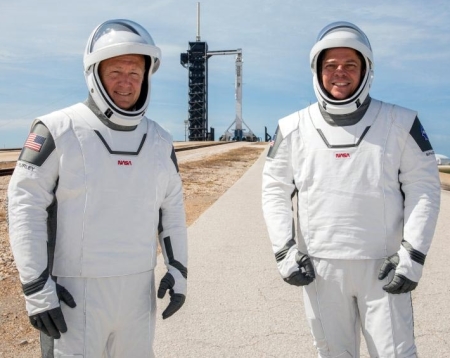Air Force limits future launch bidding to SpaceX and ULA
The Air Force today announced that it decided, after more than a year of discussions and negotiations, to limit bidding on all launch contracts for the next five years to only SpaceX and ULA, thus restricting competitive bidding on those contracts.
The awards represent the second phase of the military’s National Security Space Launch program, which is organized by the Air Force’s Space and Missile Systems Center in Los Angeles, California. Four companies — Elon Musk’s SpaceX, ULA, Northrop Grumman and Jeff Bezos’ Blue Origin — bid for the contracts, with the military set to spend about $1 billion per year on launches.
The NSSL awards represent nearly three dozen launches, scheduled between 2022 and 2026. ULA won 60% of the launches, and SpaceX won the remaining 40%.
The award blocks Northrop Grumman and Blue Origin from bidding on these contracts. Expect a lawsuit from these two companies demanding that they have the right to bid, just as SpaceX did several years ago when the Air Force tried to maintain ULA’s monopoly on bidding.
On a very common sense level, this approach by the Air Force (its space operations soon to be taken over by the Space Force) makes little sense. Why restrict bidding? Both Blue Origin or Northrop Grumman expect to have their new rockets operating commercially in the next two years. They should have the right to bid on military launches. The competition will strengthen the launch market, reduce the costs to the military, and give it more redundancy and flexibility.
Based on my research, the only real reason I have ever been able to find for the Air Force’s desire to do this is their inability to deal with their paperwork should more than two bids be received.
The Air Force today announced that it decided, after more than a year of discussions and negotiations, to limit bidding on all launch contracts for the next five years to only SpaceX and ULA, thus restricting competitive bidding on those contracts.
The awards represent the second phase of the military’s National Security Space Launch program, which is organized by the Air Force’s Space and Missile Systems Center in Los Angeles, California. Four companies — Elon Musk’s SpaceX, ULA, Northrop Grumman and Jeff Bezos’ Blue Origin — bid for the contracts, with the military set to spend about $1 billion per year on launches.
The NSSL awards represent nearly three dozen launches, scheduled between 2022 and 2026. ULA won 60% of the launches, and SpaceX won the remaining 40%.
The award blocks Northrop Grumman and Blue Origin from bidding on these contracts. Expect a lawsuit from these two companies demanding that they have the right to bid, just as SpaceX did several years ago when the Air Force tried to maintain ULA’s monopoly on bidding.
On a very common sense level, this approach by the Air Force (its space operations soon to be taken over by the Space Force) makes little sense. Why restrict bidding? Both Blue Origin or Northrop Grumman expect to have their new rockets operating commercially in the next two years. They should have the right to bid on military launches. The competition will strengthen the launch market, reduce the costs to the military, and give it more redundancy and flexibility.
Based on my research, the only real reason I have ever been able to find for the Air Force’s desire to do this is their inability to deal with their paperwork should more than two bids be received.




